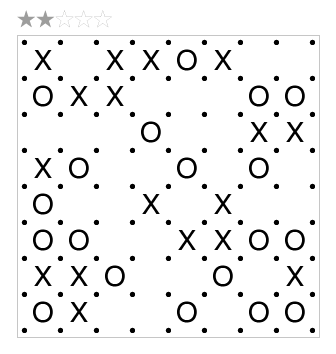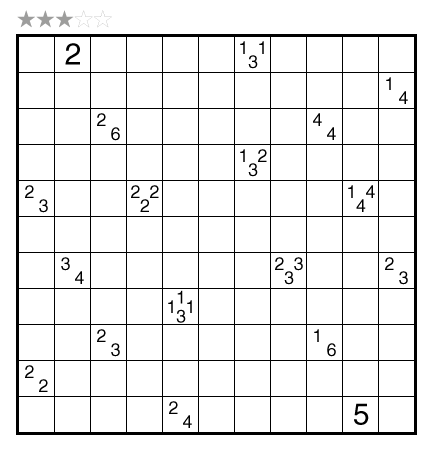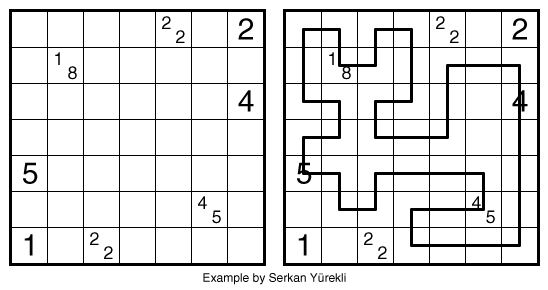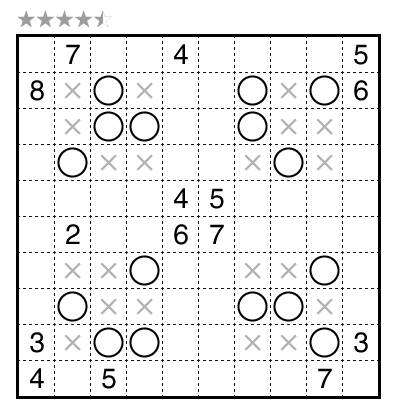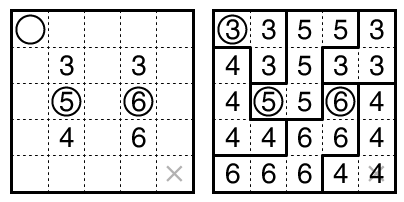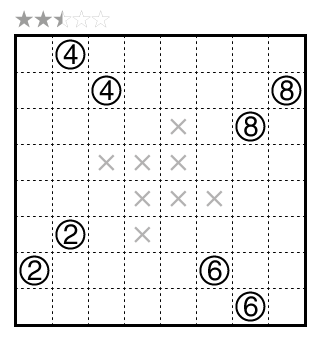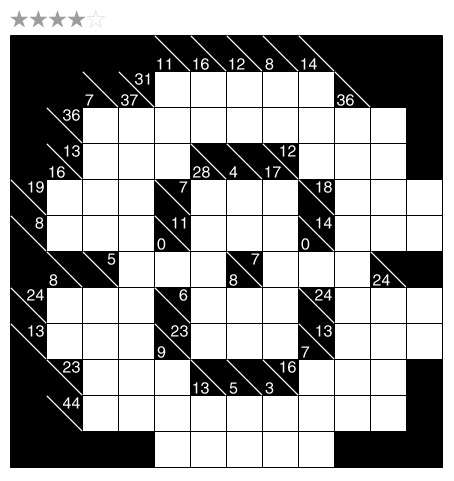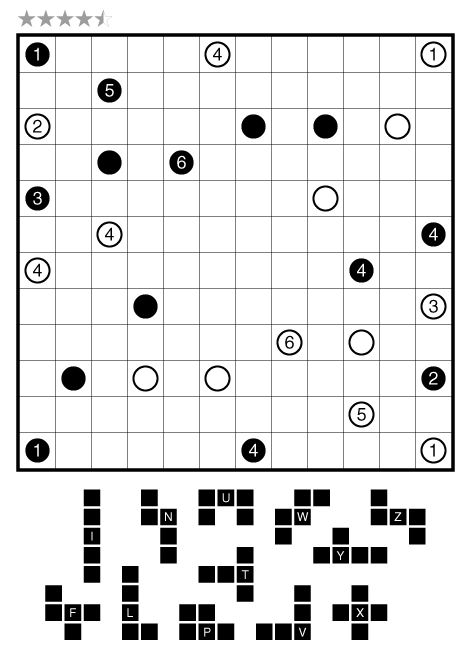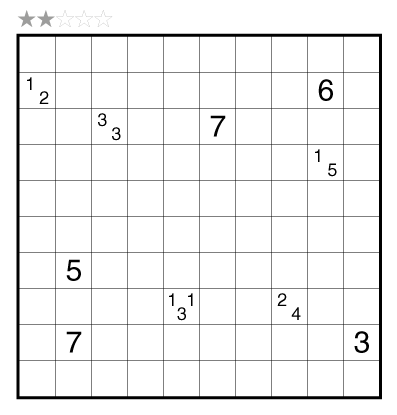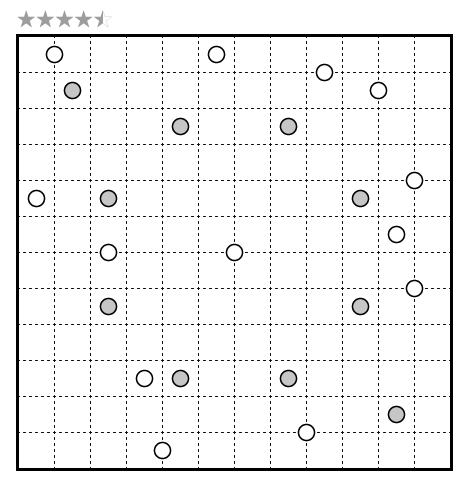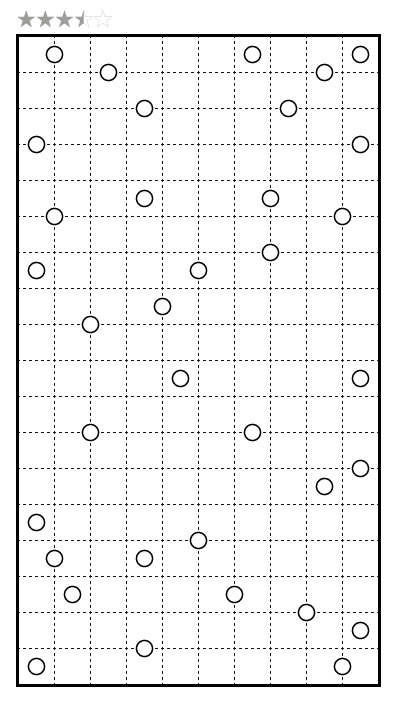This year, we started posting some extra difficult Sunday Stumpers, about once a month. These will be quite tough puzzles, but with a logical path to be found (and solution videos to help). This ninth Sunday Stumper is a new Star Battle variation from puzzlemaster Murat Can Tonta; more of this variant will be in our upcoming Star Battle 2 e-book from JinHoo Ahn and Murat Can Tonta.
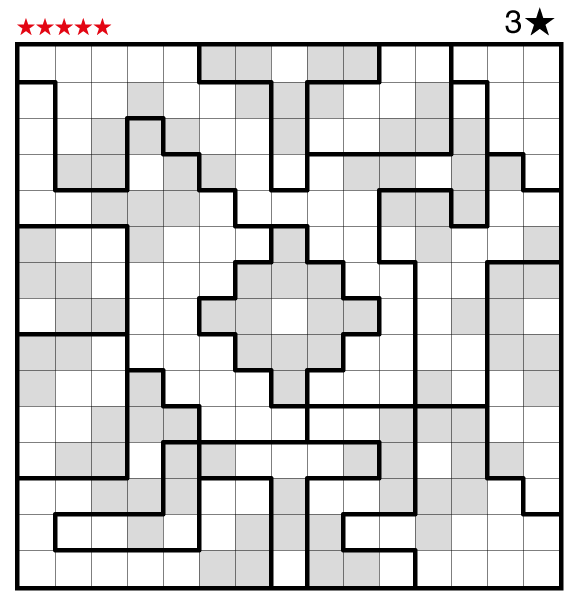
PDF
(view directly for a larger image)
or solve online (using our beta test of Penpa-Edit tools where a single star in gray means two stars but the standard Star Battle interface is used; if you prefer seeing 1 versus 2 objects, here is an alternate formatting using mines that allows for that.)
Theme: Stars
Author/Opus: This is the 208th puzzle from our contributing puzzlemaster Murat Can Tonta.
Rules: Standard Star Battle rules with three stars per row, column, and region. Also, there are some shaded cells in the grid and those cells either contain two stars or none. (In a gray cell with two stars, none of the adjacent cells sharing an edge or corner can have any stars.)
See also this example:
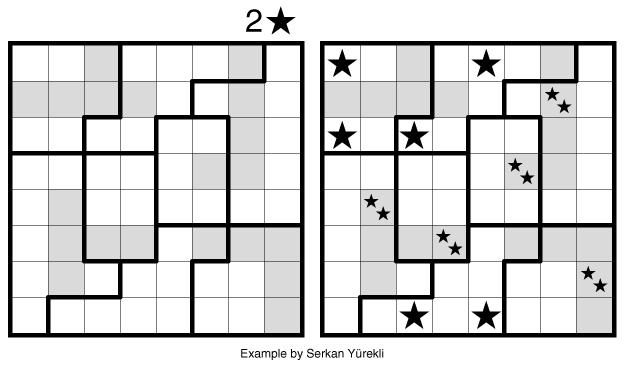
Difficulty: 5 stars
Time Standards (highlight to view): Grandmaster = 10:30, Master = 23:30, Expert = 47:00
Solution: PDF; a solution video is also available here.
Note: Follow this link for other classic Star Battles and this link for Star Battle variations. If you are new to this puzzle type, here are our easiest Star Battles to get started on. More Star Battle puzzles can be found in The Art of Puzzles, in the books Star Battle by JinHoo Ahn and Star Battle 2 by JinHoo Ahn and Murat Can Tonta, and in our beginner-friendly collection Intro to GMPuzzles by Serkan Yürekli.
